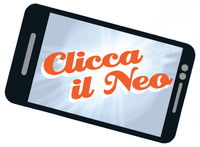Centro Studi GISED
Shoot the mole project
What we do
 Among all skin diseases, melanoma is the most common cause of death, with an incidence increasing from year to year.
Among all skin diseases, melanoma is the most common cause of death, with an incidence increasing from year to year.
In this context, primary prevention and screening to promote early diagnosis are key tools. Starting from July 2015, Centro Studi GISED has launched the "Shoot the mole" project whose main aim is to show the effectiveness of a tele-dermatology system based on:
Pilot experience
Based on data collected through the online service, a retrospective survey was conducted, in the period July-December 2015 to assess the feasibility of a validation study of the tool.
During this period, 302 pictures were sent: 256 had sufficient quality for assessment and 46 not assessable for their poor quality. Among assessable pictures: 207 (80.9%) were considered as trivial lesions not at the risk, 38 (14.8%) as suspect, and 11 (4.3%) as highly suspect lesions. These lesions were then evaluated: 4 as possible squamous-cell carcinomas and 6 as melanomas. Of these melanomas, three lesions were diagnosed as thin or in situ melanoma. The observed frequency of three melanomas out of 256 assessable lesions, is much higher than expected based on a random selection of lesions.
The results of the pilot phase have been published by the journal Recenti Progressi in Medicina:
Cazzaniga S, Castelli E, Di Landro A, et al. [Development of a teledermatology system for the melanoma diagnosis. The pilot experience of the project Click the neo]. Recent Prog Med. 2016;107:440-3.
Validation study
Between March and July 2017, Centro Studi GISED conducted a validation study for the Shoot the Mole tool. The geographical area of the study was the province of Bergamo. The study was conducted with the support of the local Health Protection Agency (ATS), the Italian League for the Fight Against Cancer (LILT) section of Bergamo, and the Bergamo Hospital Research Foundation (FROM) in collaboration with the Dermatology Department of the ASST Papa Giovanni XXIII Hospital of Bergamo.
The project feasibility relies on the following considerations:
The main objective of this study was to demonstrate the validity and usefulness of a tele-dermatology system – named as Shoot the Mole - for the early diagnosis of melanoma.
Results
The study, conducted in the province of Bergamo, collected images sent by 232 subjects using the app. 56 lesions were classified as suspicious and, after direct clinical examination, 14 (25%) of these were confirmed to be suspicious. Histological analysis confirmed 6 lesions such as melanomas. Two other lesions were diagnosed as pigmented basal cell carcinomas. The other suspicious lesions were melanocytic nevi. The diagnostic accuracy of the Shoot the Mole app with respect to the direct clinical evaluation was 81%, with a sensitivity of 92.9% and a specificity of 80.3%.
The results of the validation study were published by the journal JAAD:
Cazzaniga S, Castelli E, Di Landro A, et al. Mobile Teledermatology for Melanoma Detection. Assessment of Validity in the Framework of a Population-based Skin Cancer Awareness Campaign in Northern Italy. J Am Acad Dermatol. 2019 Feb 21.
Controlled clinical study
Between October 2016 and May 2019, Centro Studi GISED conducted a controlled and randomized clinical trial in collaboration with employees of the ATS of Bergamo.
All employees were invited to participate and, after the first check-up, randomly assigned to two groups in a 1:1 ratio. One group underwent periodic follow up and the other was asked to use the app to report the appearance of suspicious skin lesions.
The main objective was to demonstrate the validity and usefulness of the app vs. periodic follow up in identifying and evaluating recent-onset skin lesions, including precancerous lesions and melanoma and non-melanoma skin cancers.
The study was supported by a grant from the Credito Bergamasco foundation.
Network Project Shoot the mole/LILT
The Shoot the mole/LILT project represented an extension to other Italian provinces of the original Shoot the mole project, which began in 2015 in the province of Bergamo, to which the province of Vicenza was subsequently added.
The project was coordinated by the LILT headquarters in Bergamo in collaboration with the Centro Studi GISED in Bergamo and with S.P.S sas in Bergamo and with the involvement of the LILT in Bergamo, Como, Milan, Vicenza and Benevento.
It was a two-year observational study supported by a LILT/Program 5 per mille 2019 call, and it was aimed at all adult citizens residing in the provinces participating in the project, with particular attention to the most delicate categories of the population such as the elderly, of low socio-economic level. Residents in the provinces of Bergamo, Vicenza, Como and Benevento were able to send images of suspicious lesions, together with other information useful for assessing the type of lesion, using an application (Shoot the mole app), freely downloadable on their smartphone.
The aim was to extend and improve a teledermatology system for the early diagnosis of skin cancers, also addressing older subjects residing in protected structures or attending day centers, and to use algorithms for the stratification of melanoma risk in the general population, with particular attention to the groups most at risk.
The phases of the project included the integration of the app with a melanoma risk calculator (Ca.R.Me) already validated by Centro Studi GISED, the identification and training of the participating dermatologists who will evaluate the images, the promotion of the app in the provinces involved, subsequent assessments of both users and the number of suspected lesions and comparison with the expected risk levels using the risk calculator.
Back to research project
